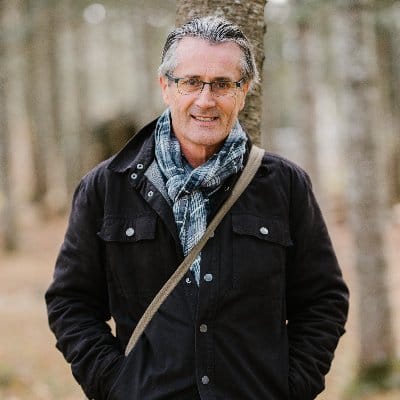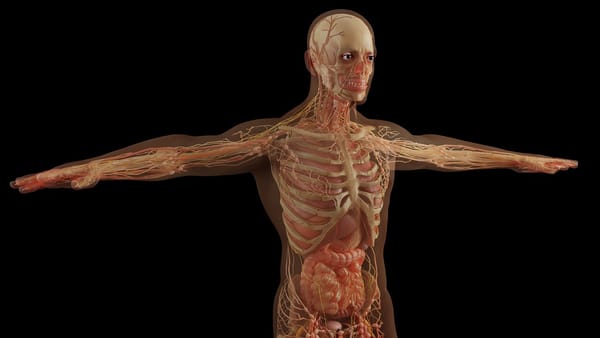The Birth of Capitalism and Individuality
Gold has long symbolized the incorruptible core of the self — the sun within. If “being oneself” is an initiation, then the work resembles an alchemy..

Gold has long symbolized the incorruptible core of the self — the sun within. If “being oneself” is an initiation, then the work resembles an alchemy..


We often hear: be yourself and you will thrive. But this modern mantra, though appealing, hides a deeper story…
The credo — “one has to be oneself” — is a typical pillar of American society.
Even American capitalism is built on it. It says that if you are truly yourself, you will succeed in life. The promise is: follow your real passions, and you will find your place, your colleagues, your “path,” and everything will fall into place.
There is truth in this — yet it is only a half-truth. And taken without its full context, it can become misleading and even harmful for society.
This idea permeates American culture and the “American way of life,” where individuality plays a key role. One of the first thinkers to place it in an economic context was the Scottish economist and philosopher Adam Smith (1723–1790). Smith was a keen observer of economic production and the workings of the market. He is considered one of the fathers of free-market theory, liberalism, and, in many ways, capitalism itself.
Smith believed that if each person followed their natural inclinations, they would, in effect, follow the path God had intended for them. By doing so, they would fulfill their life’s task, contribute to the greater good, and be rewarded accordingly. This was his famous idea of the “Invisible Hand.”
It sounds convincing, doesn’t it?
Indeed, it seems right — and that is why it became the philosophical basis of capitalism. But here lies the problem: reality does not actually work this way. The story is compelling, but the mechanism fails in practice. Life does not reliably reward people for simply “being themselves.” Markets exploit; power concentrates; injustice and inequality arise.
While Smith assumed it was God’s will that everyone should find their rightful place, reality often functions through sheer exploitation.
The power of the statement “If you are yourself, you will succeed” comes from the fact that it is partly true. It is suggestive and persuasive. It leads many to accept their place in life, hoping that they can one day “climb the ladder” — provided they can be authentic and strong enough to remain true to themselves. It encourages the building of a courageous, self-assertive ego — an individuality that resists outer conformity.
And there is truth in this. We do, in our time, live in the age of the awakening of the individual “I,” the “I AM.” This marks a sharp contrast to earlier human history, when people were expected to obey outer authority, and greed or personal desire were condemned as sins that threatened social cohesion.
From the 15th century onward, this situation changed dramatically. The authority of the Church weakened; the Bible, once bound to Latin, was translated and widely distributed through the newly invented printing press. The discovery of America, a continent free from European traditions, created fertile ground for new ways of thinking.
Humanity entered the Renaissance — literally a “rebirth” — and soon after the Enlightenment. These movements brought the rise of natural science and a growing view of the world as a purely material system. The miraculous, God-given world of the Middle Ages receded; a new human being emerged, convinced that “light” had been found in rational, material knowledge.
This was a necessary phase. A naïve, merely devotional view of the world could not last. Science had to rise.
But the science that lifted us was mechanistic and reductionist. Today, if this outlook remains dominant, it will only continue to mechanize the world and stunt the deeper birth of the human being.
Our age requires a widened context for individuality. The human “I” must now be recognized not merely as a bundle of characteristics embedded in genetics, but as a spiritual reality.
Without this spiritual understanding, the modern individual knows itself only as a physical organism. The “I AM” is then born in a stunted way — materially self-aware, but ontologically ungrounded.
A true birth of the individualized “I AM” can happen only when supported by a spiritual-scientific worldview. The human being must gain empirical access to its non-physical dimensions — to the etheric body and the spiritual worlds it mediates. Only when the physical boundaries are consciously widened to include these realities can the individuality be fully born.
Otherwise, the modern self remains a half-formed ego, confined to biology and psychology, unable to know its own spiritual being.
This is why the full realization of “being oneself” is not a casual lifestyle choice but an initiation process. It includes the Threshold experience — the decisive crossing where the self awakens to its spiritual nature.
Today this Threshold is often misunderstood and reduced to a merely physical crisis: burnout, breakdown, trauma, or identity struggle. But these remain bound to physical and psychological explanations. The true Threshold is a passage into the spiritual dimension of the human makeup, without which individuality cannot be fully realized.
If ‘being oneself’ is an initiation, what practices or inner orientation prepare us for this birth? Gold has long symbolized the incorruptible core of the self — the sun within. If “being oneself” is an initiation, then the work resembles an alchemy: refining the raw personality until the gold of the I-AM can shine. How do we take up such a work today?








